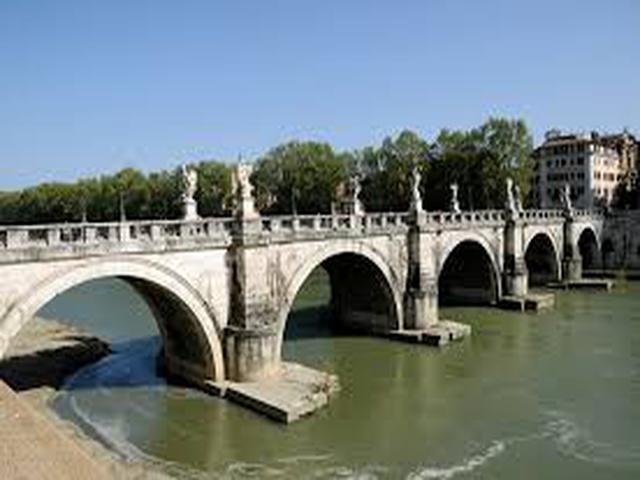San Angelo Bridge

Ponte Sant'Angelo, also known as the Aelian Bridge or Pons Aelius, is a stunning Roman bridge located in the heart of Rome, Italy. Built in 134 AD by the Roman emperor Hadrian, this architectural marvel was constructed to connect the city center to Hadrian's newly built mausoleum, which is now the iconic Castel Sant'Angelo. The bridge is a true testament to Roman engineering, featuring five majestic arches, three of which are original Roman arches. Clad in beautiful travertine marble, Ponte Sant'Angelo spans the majestic Tiber River and offers visitors a breathtaking panoramic view of Castel Sant'Angelo.
Throughout its rich history, Ponte Sant'Angelo has undergone several name changes and transformations. In the early Middle Ages, the bridge was known as the "Saint Peter's Bridge" as pilgrims used it to reach St. Peter's Basilica. Under Pope Gregory I in the 6th century, both the bridge and the castle were renamed Sant'Angelo, inspired by the legend of an angel appearing on the castle's roof to signal the end of a devastating plague. The bridge has played a significant role in the religious and cultural life of Rome, especially during Jubilee years when pilgrims flocked to the city.
One notable event in the history of Ponte Sant'Angelo occurred during the Jubilee of 1450 when the bridge's balustrades collapsed under the weight of the large crowds, resulting in a tragic incident where many pilgrims drowned in the Tiber River. In response to this disaster, several houses at the entrance of the bridge and a Roman triumphal arch were demolished to widen the path for pilgrims. This event serves as a reminder of the bridge's importance as a vital link for religious pilgrims and visitors to the city.
Today, Ponte Sant'Angelo stands as a symbol of Rome's rich history and architectural heritage. The bridge is now a pedestrian-only thoroughfare, allowing visitors to leisurely stroll across its ancient arches and take in the breathtaking views of the Tiber River and Castel Sant'Angelo. Whether you are a history buff, an architecture enthusiast, or simply a curious traveler, Ponte Sant'Angelo offers a unique glimpse into the past and a chance to experience the beauty and grandeur of ancient Rome firsthand. Don't miss the opportunity to visit this iconic landmark and immerse yourself in the history and charm of the Eternal City.
© ChatGPT 3.5
In 1535, Pope Clement VII allocated the toll revenues from the bridge to erect the statues of the apostles Saint Peter (holding a book, with the inscription on the pedestal Rione XIV) of Lorenzetto, and Saint Paul (holding a broken sword and a book, with the pedestal inscription Borgo) by Paolo Romano to which the four evangelists and the patriarchs were later added to other statues representing Adam, Noah, Abraham and Moses. For centuries after the 16th century, the bridge was used to display the bodies of those executed in the nearby Piazza di Ponte, at the head of the left bridge. In 1669, Pope Clement IX commissioned replacements of the old stucco angels by Raffaello da Montelupo, commissioned by Paul III. Bernini's program, one of his last great projects, summoned ten angels with instruments of the Passion: he personally only finished the two originals of the Angel with the Superscript "INRI" and the Angel with the Crown of Thorns, but Clement IX them saved for his own pleasure. They are now in the church of Sant'Andrea delle Fratte, also in Rome.
At the end of the 19th century, due to the construction of the Lungotevere, the two Roman ramps that linked the bridge to the two banks were destroyed, and in their place two arches similar to the Roman ones were built.
For the Great Jubilee in 2000, the Lungotevere on the right bank between the bridge and the castle was converted into a pedestrian area.